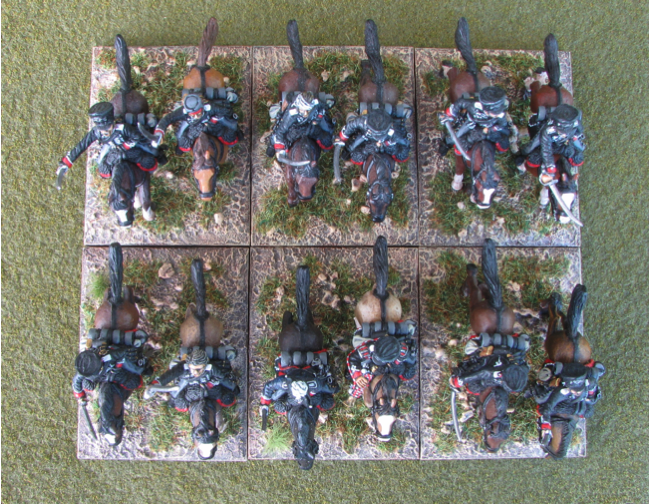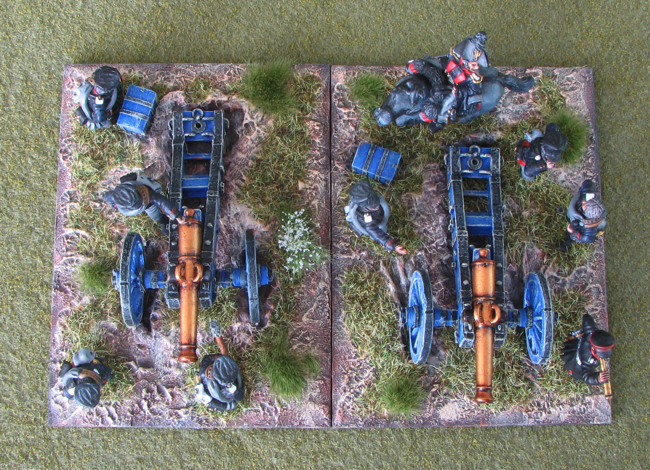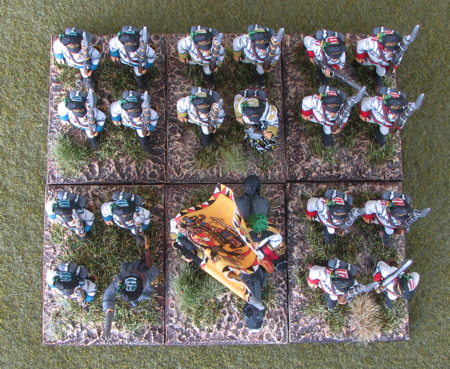Leaders
There is a case to be made that the leader / command bases used are over the top both size wise and number of figures used wise. The sad truth of the matter is that von Peter himself cannot resist the creation of little vignettes with his leader stands. And with so many superb figures available why restrict ones self?
The leader figures are based on what are sold as coaster in craft shops. Perhaps surprisingly there is a sort of logic to the leader bases. National army CinCs use square coasters whilst all others get to utilise the slightly smaller round coasters. In addition cavalry leaders will tend to all mounted figures whilst the others tend to get a mixture of mounted and foot. Divisional leaders will tend to have more figures than brigadiers. Some of the earlier leader bases - mostly the Austrians are pre the coasters and constituent figure ideas
Because they could be useful in some scenarios, because they could be useful in some rules, because they sometimes provide an excuse to field a handsome uniform and because if nothing else they can just be strewn around a battlefield as scenery each national army receives a number of ADCs. These are single mounted figures based on a frontage of 1.5 inches and a depth of 2.5 inches.
For use in Sharpe Practice games and general debris on the battlefield there are some single mounted foot figures. They tend to be based so as to match the infantry regime.
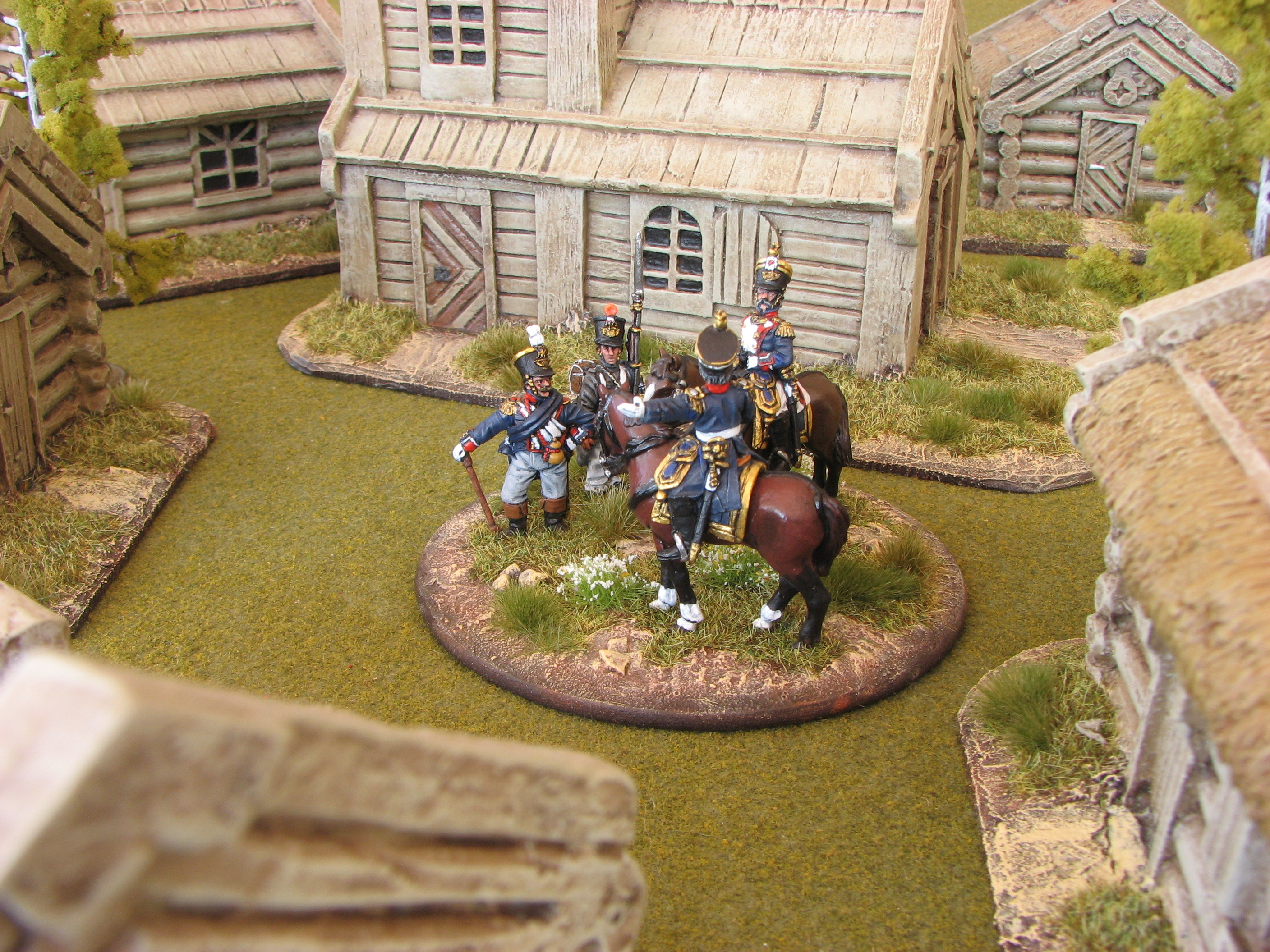
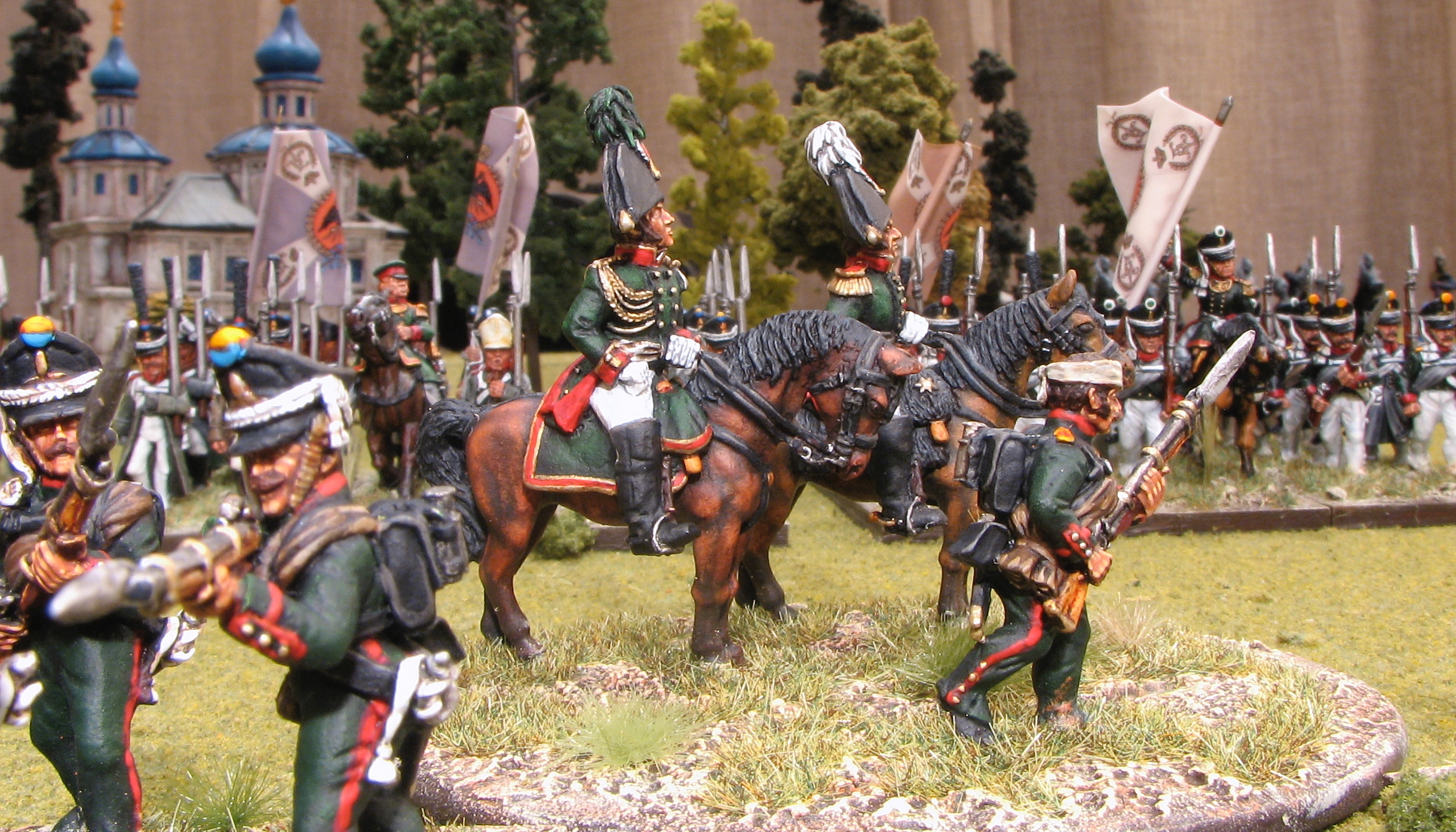
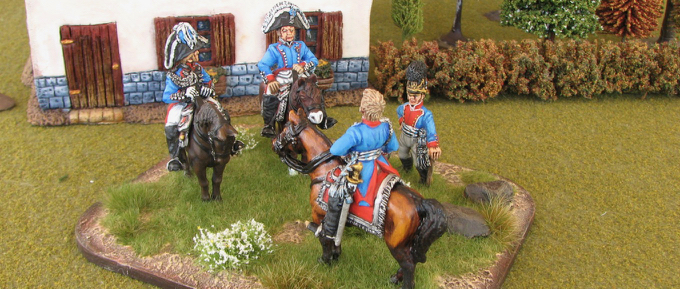
Napoleonic basing
Once the figures are painted the ordeal is not yet complete. They still need to be based!
Bizarrely von Peter himself is often asked about his basing regime. So what follows is a few words and occasional rationale on that topic. It is not perfect but it is what it is. Take what you will.
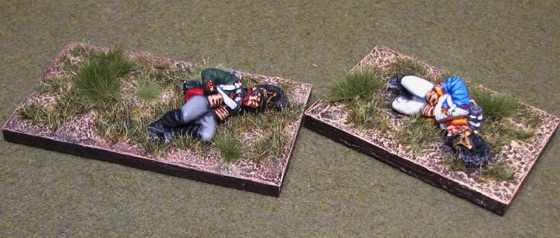
Casualties
Casualty figures are useful in some game systems or alternatively excellent for polluting the game table with regrettable reminders of the human cost of war. They are all infantry to date and are based to match their parent unit.
Artillery
Most batteries are comprised of two artillery pieces representing either six or eight piece batteries. The larger twelve piece Russian batteries get an extra model cannon. Each cannon gets its own base.
The bases used are larger than used by some. This allows for a little more leeway with the representation of the crew, any other interlopers and general scenic bits. And anyway the frontage of the battery is still well down on what it should be when compared with the infantry battalions so why skimp?
The number of men crewing each cannon is an aesthetic thing with no significance placed on the number. Some care has been taken with the placement of the figures on each stand, eg. a crew posed as firing their cannon will not have a figure standing behing a wheel that will inevitably recoil over them! It has become a local standard to add a mounted officer to 12pdr batteries. Such serious kit is well worth such elevated oversight.
While generally happy with the arrangement for the artillery the six vs. eight gun battery difference niggles. Both look the same on the table ... which is only fair since many rules treat them as equivalents! It grates a little at times.
Cavalry
Cavalry units have been mostly standardised as 12 figures based on six bases with two figures per base. Usually this represents a regiment but for some of the large regiments, eg. Russian hussars, it may represent a battalion or half regiment. This regime has worked well to date allowing the units to be used with several differing rule sets. Also as with the infantry the smaller - two figures in this case - bases allow the units to fit on/around terrain. They are capable of forming up in whatever formation is required. Base sizes are a 2 inch frontage with a 2.5 inch depth
Infantry
Infantry battalions are generally a nominal 24 figures strong based as four figures on six bases. "Nominal" because not all bases get the full 4 figures. This may be because there is a mounted officer taking the place of two figures or a prone casualty figure does not allow enough space for the full four figures or for purely aesthetic reasons. Whatever the reason some battalions may be well less than 24 figures strong but they are all considered to be of equivalent size for gaming. This has yet to prove a problem. Many rules do not count figures and for those that do then it is simple enough to assume that each base contains the full four figures. The six smallish bases may not be to everyones liking but they do make the battalions a bit more usable for a variety of rule sets. They also allow for more adaptability on the table top, eg. a column of march looks like a strung out column of march and there aren't many model bridges that can't fit a stand flat on the road way rather than awkwardly straddling the structure.
Line battalions are composed of one of the various figure poses available. The march attack pose with muskets held vertically is a favourite as it shows the uniforms well, is easy to paint and easy to base.
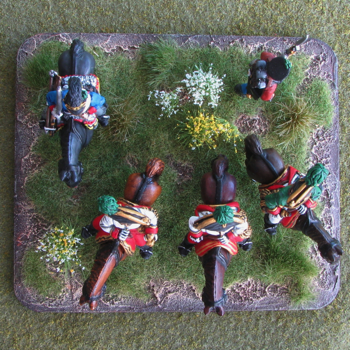
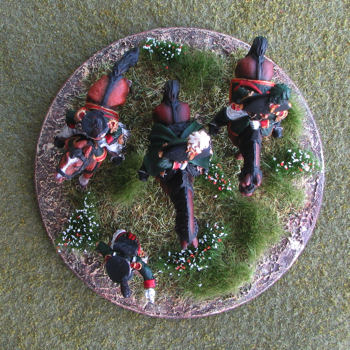
Light battalions are modelled as firing lines. von Peter himself likes mixing and matching figure poses to create the finished article; it differentiates the light from the line battalions; and it looks better when the bases of the battalions are separated to simulate skirmishing.
Extra / super light battalions - eg. Prussian jägers - are based two figures per base. The bases are cunningly designed / choreographed to mimic the practice whereby skirmishers worked as pairs with one of the two always having a loaded weapon. Therefore no base has both figures firing or both loading.
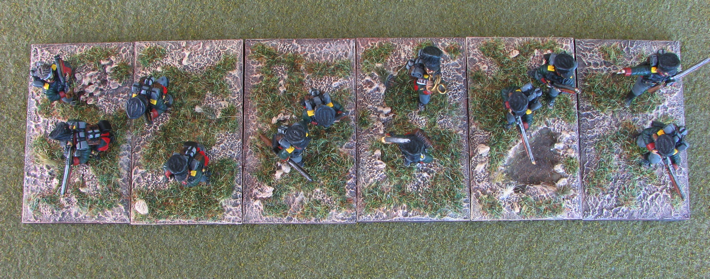
The frontage of all infantry bases is the same - 1.5 inches - but two depths are used. This is because von Peter himself has a self imposed rule that no part of a figure should overhang the edge of a base. This simple expedient keeps the figures in a much better state of health than would otherwise be the case. A standard base depth of 2 inches is the most used. For battalions modelled as firing lines or overly enthusiastically stretched out charging then a deeper base of 2.5 inches is used. This difference in basing has yet to prove a problem when gaming.

